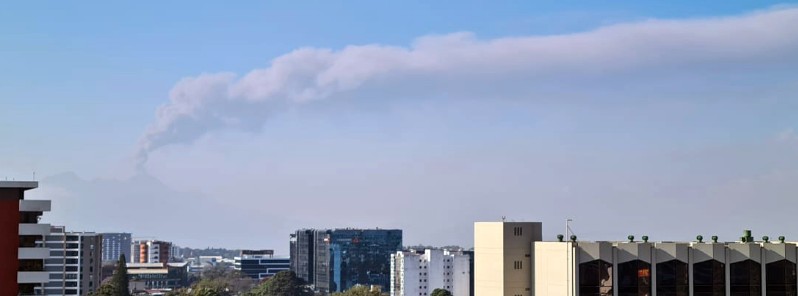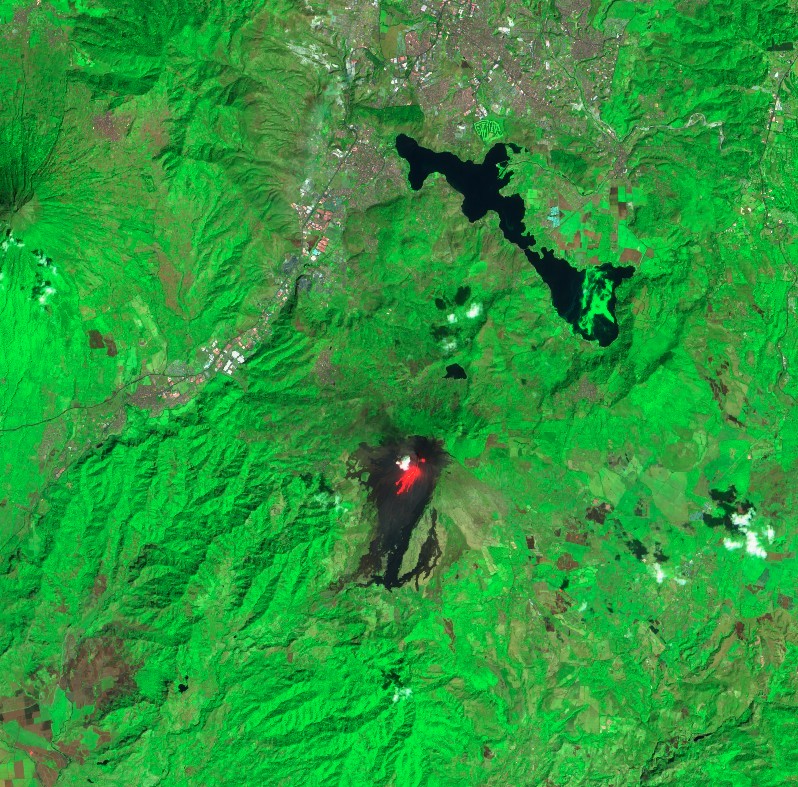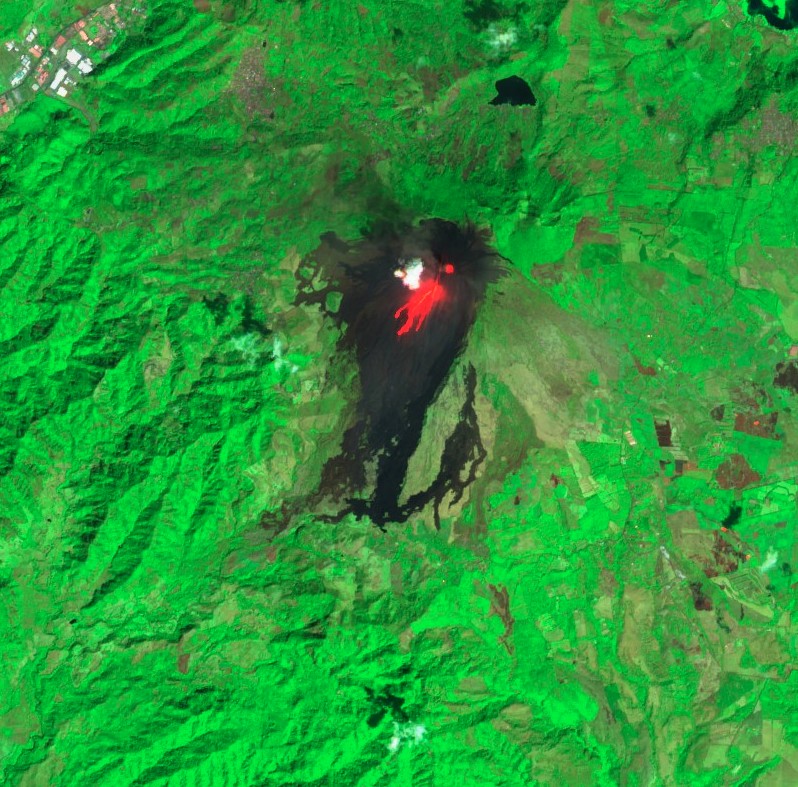Increased explosive activity at Pacaya volcano, Alert Level raised to Yellow, Guatemala

Volcanic activity at the Guatemalan Pacaya volcano has increased over the past few days, prompting authorities to raise the Alert Level to Yellow.
INSIVUMEH reported a significant increase in Strombolian activity with constant moderate and occasional strong explosions on February 9.
This activity is generating dense columns of ash and gas, reaching a height of about 3.8 km (12 500 feet) above sea level.
Ash columns spread in a radius of 10 to 68 km (6 – 42 miles), mainly to the N, NW, W and SW, affecting the communities of El Patrocinio, El Rodeo, and El Caracol.



Pacaya volcano on February 8, 2021 – SWIR. Credit: Copernicus EU/Sentinel-2, TW


Pacaya volcano on February 8, 2021 – SWIR. Credit: Copernicus EU/Sentinel-2, TW
Active effusive activity is generating several lava flows up to 1.2 m (0.7 miles) in length.
#Pacaya pic.twitter.com/23zlbQzdyw
— Alex (@ASantis_) February 10, 2021
#Guatemala #GuayanaFrancesa
Actividad del #volcán #Pacaya continúa alta y se reporta caída de ceniza en la comunidad El Patroncito.
La ceniza expulsada alcanza 3 mil 500 metros sobre el nivel del mar. pic.twitter.com/M69E8VK92v— (@FriasAlejandro_) February 9, 2021
Volcán de #Pacaya, en Guatemala, continúa con fuerte actividad
Este martes, Guatemala ha mantenido la alerta por la fuerte actividad del volcán Pacaya, cercano a la capital, y que desde el fin de semana genera intensas explosiones y lluvia de ceniza en comunidades cercanas. pic.twitter.com/j5YhIEQq98
— Vivo Noticias (@VivoNoticiasMX) February 9, 2021
#UltimaHoraIMPRESIONANTE
Comienza con #Erupcion 2021
el #Volcan Volcan de Pacaya
9 de Febrero Ciudad de #Guatemala #Eruption #FelizMiercoles #Erupcion#Sismo #Volcano #Temblor #Lluvia #Vacuna
Cinépolis Mendy #VolcanPacaya #Pacaya pic.twitter.com/PAaGyCmQ0k— Temblor Alerta Sismica (@elluchin1) February 10, 2021
People who live in areas near the Pacaya volcano are recommended to attend to the information shared by local authorities, review their Family Response Plan and have the 72-hour backpack ready for each member of the family.
To the residents and tourists, avoid approaching the Pacaya volcano area.
Geological summary
Eruptions from Pacaya, one of Guatemala's most active volcanoes, are frequently visible from Guatemala City, the nation's capital. This complex basaltic volcano was constructed just outside the southern topographic rim of the 14 x 16 km (8.7 x 9.9 miles) Pleistocene Amatitlán caldera. A cluster of dacitic lava domes occupies the southern caldera floor.
The post-caldera Pacaya massif includes the ancestral Pacaya Viejo and Cerro Grande stratovolcanoes and the currently active Mackenney stratovolcano.
The collapse of Pacaya Viejo between 600 and 1 500 years ago produced a debris-avalanche deposit that extends 25 km (15 miles) onto the Pacific coastal plain and left an arcuate somma rim inside which the modern Pacaya volcano (Mackenney cone) grew.
A subsidiary crater, Cerro Chino, was constructed on the NW somma rim and was last active in the 19th century.
During the past several decades, activity has consisted of frequent strombolian eruptions with intermittent lava flow extrusion that has partially filled in the caldera moat and armored the flanks of Mackenney cone, punctuated by occasional larger explosive eruptions that partially destroy the summit of the growing young stratovolcano. (GVP)
Featured image credit: CONRED

Commenting rules and guidelines
We value the thoughts and opinions of our readers and welcome healthy discussions on our website. In order to maintain a respectful and positive community, we ask that all commenters follow these rules:
We reserve the right to remove any comments that violate these rules. By commenting on our website, you agree to abide by these guidelines. Thank you for helping to create a positive and welcoming environment for all.